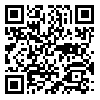Introduction: Adolescence is one of the most important and critical periods of life, serving as a transitional phase from childhood to adulthood, facing many risks including addiction. Aim: The present study aimed to explain the model of tendency towards drug use based on critical thinking, media literacy, and socialization, mediated by attitudes towards drugs in adolescent girls in Isfahan. Method: The study employed a descriptive-correlational method of structural equations. Among 13 to 18-year-old adolescent girls in Isfahan, 300 were selected using convenience sampling. The instruments used in this research included the Addiction Tendency Assessment Questionnaire (2009), Ricketts Critical Thinking Skills (2003), Ralph Katz Socialization (1988), Philosophical Media Literacy (2014), and Nazari's Attitude Towards Addiction (2000). Structural equation modeling using AMOS24 software was employed to analyze the research model. Findings: The analysis of the data results showed that critical thinking had a significant direct effect on the tendency towards drug use, and attitudes towards drug use played a significant mediating role in the effect of critical thinking and media literacy on the tendency towards addiction. Conclusion: According to the results, by enhancing critical thinking and media literacy, the tendency towards drug use in adolescents can be reduced by creating a more negative attitude towards drug use. Therefore, it is suggested that educational systems take steps to improve adolescents' critical thinking and media literacy skills to provide the groundwork for changing their attitudes and tendencies towards drug use.
| Rights and permissions | |
 |
This work is licensed under a Creative Commons Attribution-NonCommercial 4.0 International License. |





